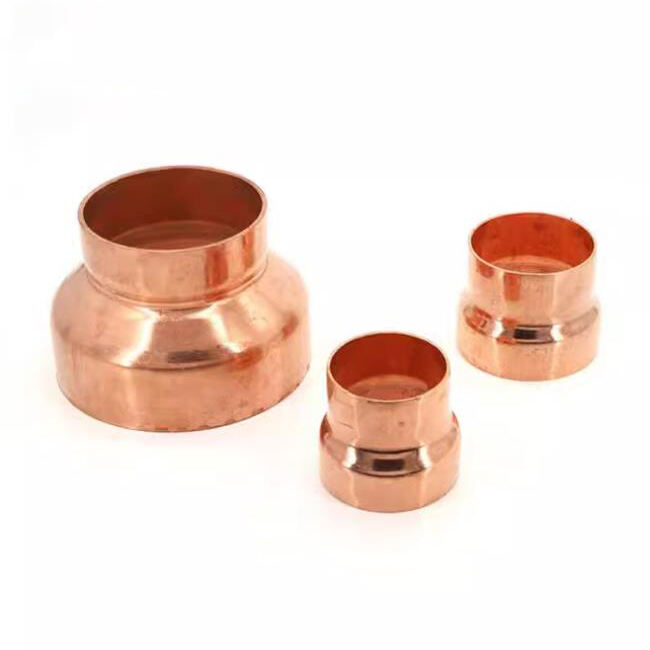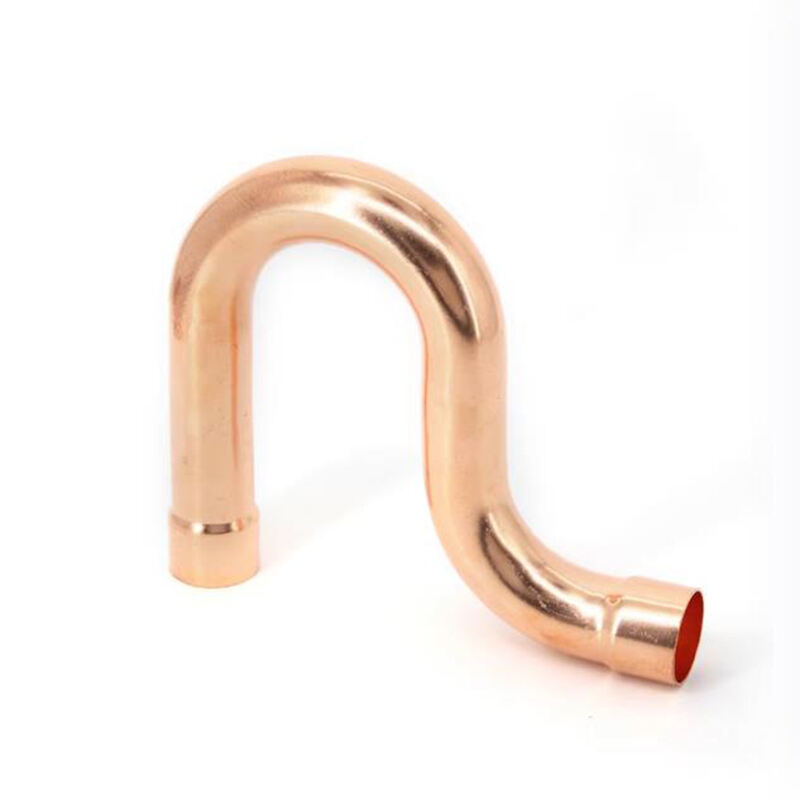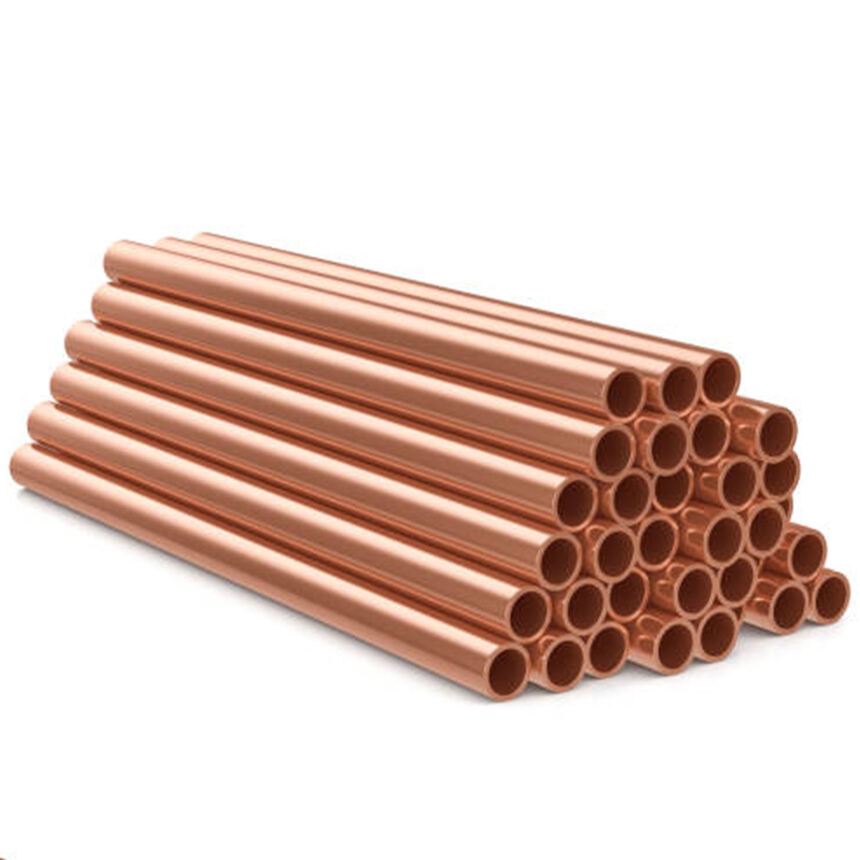Understanding the Cepper Elbow in Modern Systems
Definition and Primary Function
Cepper Elbows serve as important parts in plumbing work, connecting copper pipes at angles when needed. They really come in handy for changing direction of flow without causing too much resistance, something that matters a lot in both water lines and gas systems across different types of buildings and heating systems. When installed properly, these elbows help keep pressure stable throughout the system while maintaining good water flow rates. Plumbers tend to prefer them because they last longer than other options and don't create those annoying leaks over time. Most residential and commercial jobs now include Cepper Elbows whenever copper piping needs to turn corners, since combining them with standard copper fittings creates connections that hold up well against corrosion and wear.
Copper vs. Brass Fittings: Key Differences
Copper fittings stand out in the plumbing world, especially those bendy Cepper Elbows, because they last so long and don't corrode easily compared to brass alternatives. This makes copper a better bet when dealing with damp areas or places where chemicals might be present. Brass does have its strengths mechanically though it tends to suffer from dezincification problems over time, particularly where there's lots of corrosion going on. When picking materials for plumbing jobs, knowing this stuff matters a lot if we want our systems to work properly for years instead of months. Copper really hits that sweet spot between being tough enough to handle whatever comes its way while still standing up against all sorts of environmental challenges without breaking down.
Role of Cepper Elbows in Plumbing and HVAC Networks
Directing Water Flow in Copper Piping Systems
Cepper Elbows help direct water flow inside copper piping systems and are pretty important stuff for both home and business plumbing. These fittings reduce turbulence whenever water turns corners, something that matters a lot in real world installations. The benefit? Water moves better through the system while putting less stress on the pipes themselves over time. Getting the right angle on those elbows actually affects water pressure levels too, so proper sizing and good installation work really count for something here. From keeping water flowing smoothly through copper tubes to helping prevent pipe damage down the road, these elbow fittings just plain matter if anyone wants their plumbing to work efficiently day after day.
Optimizing Airflow in HVAC Ductwork
When it comes to HVAC systems, Cepper Elbows play a key role in getting air moving properly through ducts. These fittings help create smoother transitions between different sections of ductwork, which means air gets distributed more evenly across spaces. Balanced airflow matters a lot for keeping energy costs down since when air isn't flowing right, systems end up working harder than they need to and just waste power. Some studies indicate that good angle joints can actually increase airflow by around 25 to 30 percent, which really highlights why proper installation techniques matter so much. So basically, Cepper Elbows aren't just about making ductwork look nice they actually make a big difference in how well an HVAC system performs overall, helping maintain comfortable temperatures while saving on energy bills at the same time.
Types of Cepper Elbows and Material Compatibility
90-Degree vs. 45-Degree Angles for Copper Tubing
Choosing between 90 degree and 45 degree Cepper Elbows depends largely on what the plumbing or HVAC system actually requires. For those cramped areas where a quick right angle bend is needed, the 90 degree elbow works best since it fits into tight spots without taking up extra room. Meanwhile, when dealing with longer runs or systems where smooth flow matters more, 45 degree elbows tend to perform better because they create less resistance and maintain pressure levels throughout the pipe network. Looking at how the pipes run through the building and considering how fluids will move through them helps decide which type makes sense for any particular installation. Getting this right from the start saves headaches down the road as systems operate efficiently for years instead of breaking down prematurely due to poor component selection.
Selecting the Right Connector for Copper Pipe Systems
Picking the correct Cepper Elbow for copper pipe systems needs good knowledge about how materials work together. Brass fittings paired with copper elbows can cause problems if not thought through properly since there's a risk of corrosion happening between them. Temperature changes, what pressure levels the system handles, plus outside conditions all matter when trying to avoid breakdowns later on. Getting the connection right matters a lot for keeping everything intact without leaks developing somewhere down the line. A well chosen elbow ensures things last longer and perform better overall, which means fewer headaches and a piping setup that actually works reliably day after day.
Installation Techniques for Copper Pipe Elbows
Soldering Best Practices for Brass and Copper Joints
Getting good results when soldering copper elbows onto copper pipes means creating strong joints that won't leak. First things first, clean those pipe ends and fittings really well. Any dirt or oxidation left behind will mess up the whole process. Make sure to grab the right kind of flux and solder for copper work. Using what doesn't match can lead to corrosion down the road and poor connections between parts. Temperature control matters too during soldering. Too hot and we risk damaging the copper tubing itself. Not hot enough creates weak spots where water could escape later on. Stick with these basic steps and most problems like unexpected leaks or expensive fixes just don't happen.
Ensuring Leak-Free Connections in HVAC Applications
Keeping those connections free from leaks in HVAC systems with copper elbows matters a lot when it comes to how well the whole system runs day after day. When putting things together right, getting everything aligned properly counts for something big, plus using the right sealant stuff where needed helps make sure no air gets through. And don't forget about testing once everything's installed either. Pressure checks are pretty much mandatory here because they'll catch problem areas before they turn into bigger headaches down the road. Setting up regular checkups makes sense too. Most technicians find that looking at their systems every six months or so catches small problems early on before they become major repair jobs. Sure, following all these steps takes time upfront, but it pays off handsomely over years of trouble-free operation.
Maintenance Strategies for Long-Term Performance
Preventing Corrosion in Copper Plumbing Fittings
Copper plumbing fittings, including Cepper Elbows, face serious corrosion issues when installed in places with lots of moisture. Regular maintenance makes all the difference here. Apply some good quality protective coating and check systems periodically to stop corrosion from setting in. Pay special attention to spots where humidity levels stay high and chemical exposure occurs frequently. These problem zones tend to wear down brass fittings faster than others. Most plumbers know this from experience rather than just reading research papers. Taking care of these vulnerable areas upfront helps maintain the strength of copper pipes while cutting down on those costly emergency fixes that nobody wants to deal with during busy workdays.
Inspecting Elbows in HVAC Ventilation Systems
Checking Cepper Elbows regularly in HVAC ventilation systems helps catch small problems before they turn into major headaches down the road. Good maintenance means looking out for leaks around these components, checking how much corrosion has built up over time, and making sure all the joints still hold tight. Industry experience tells us that when technicians do these checks on schedule, it often adds years to the life of the whole system while cutting down those annoying surprise breakdowns. For facilities where clean air matters most, like hospitals or labs, this kind of preventive work isn't just nice to have it's practically essential. When companies build regular elbow inspections into their standard maintenance routines, they end up with better performing systems, safer working conditions, and ultimately save money in the long run despite what some might think about upfront costs.









